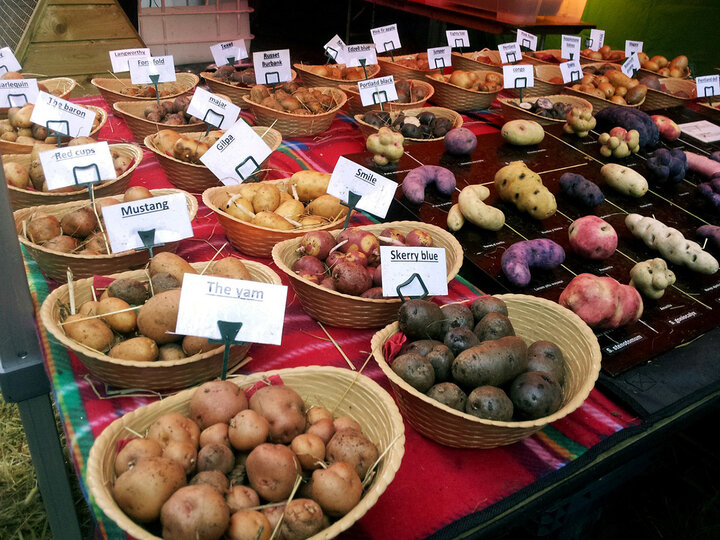Sarah Browning, Nebraska Extension Educator

Growing vegetables and understanding gardening terms. Image by Pixabay.com
Sometimes understanding gardening terms is difficult. For example, what exactly is a hybrid vegetable? How do hybrids differ from heirlooms? What are open pollinated varieties? Let's take a look at the meaning of these terms and why it's important for gardeners to understand them.
Species is a naturally occurring plant, which evolved with no human manipulation or intervention. Very few plants grown in home vegetable gardens today are naturally occurring species, but an advantage of these plants is gardeners can save seeds from them each year and grow new plants the following season that are identical to the original parent plants.
One example of a naturally occurring plant still grown in many home gardens is red vein sorrel, Rumex sanguineus, which is used as a salad green.
Cultivar, a contraction of the terms "cultivated variety", refers to a plant created through human breeding using techniques such as plant selection and plant crossing. Cultivars are indicated on plant tags and catalogs with single quotes around the cultivar name, such as 'Celebrity' tomato or 'Kentucky Wonder' beans.
The vast majority of vegetables available to home gardeners are cultivars and have been developed through some type of human manipulation. One of the earliest forms of plant breeding used was simple - plant selection. With this technique, seed is saved from the healthiest, best tasting, most productive plants to grow out the next year. Makes sense, right? If you wanted to save seed for next year's garden, you'd choose the best plants in your garden as your seed source.
The development of cultivated plant varieties enabled farmers to increase the health, vigor and harvest from their plantings.

Others define heirlooms as lines of plants, grown locally or regionally, that have been passed down through families or groups. Among these heirloom vegetables there is a great variety of colors, flavors, shapes and textures.
All heirloom plants are open pollinated – meaning that seed from these varieties can be saved each year by home gardeners and will grow 'true to type' from seed each time. In other words, plants grown from seed will look exactly like the parent plant did, having the same plant size and growth habit, as well as fruit size, color and flavor.
One drawback to heirloom vegetables is that they often lack disease resistance found in many modern varieties to common disease problems, such as the soil-borne diseases Verticillium and Fusarium wilt.
A hybrid is a plant cultivar developed through the crossing of two species or two distinct parent lines. Hybrid plants are usually stronger, more vigorous and have improved disease resistance. They often have fruits that are more uniform in size, shape and color, have better storage quality and shipping ability. For tomatoes, improved shipping ability usually means the tomato flesh is firmer than that found in most heirloom tomatoes.
However, hybrid plants do not grow 'true to type' from seed. So you'll need to buy new seed each year.
So when you're purchasing plants this spring, keep these terms in mind. Especially if you would like to save seeds from year to year.
Images by Pixabay.com
Search Our Archive
Associated Video
Tomato Grafting
UNL Horticulture grad student Josh Reznicek shows how to properly graft tomatoes.